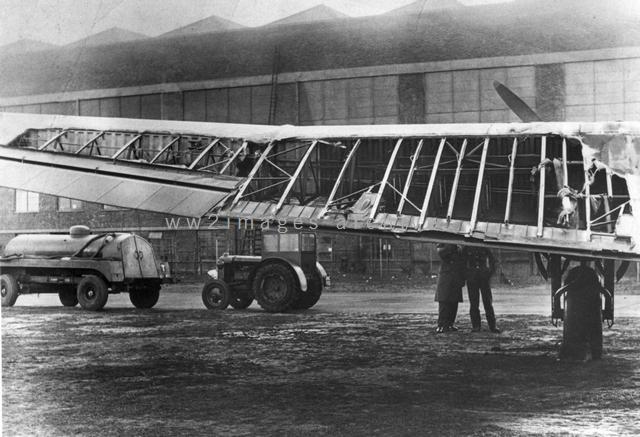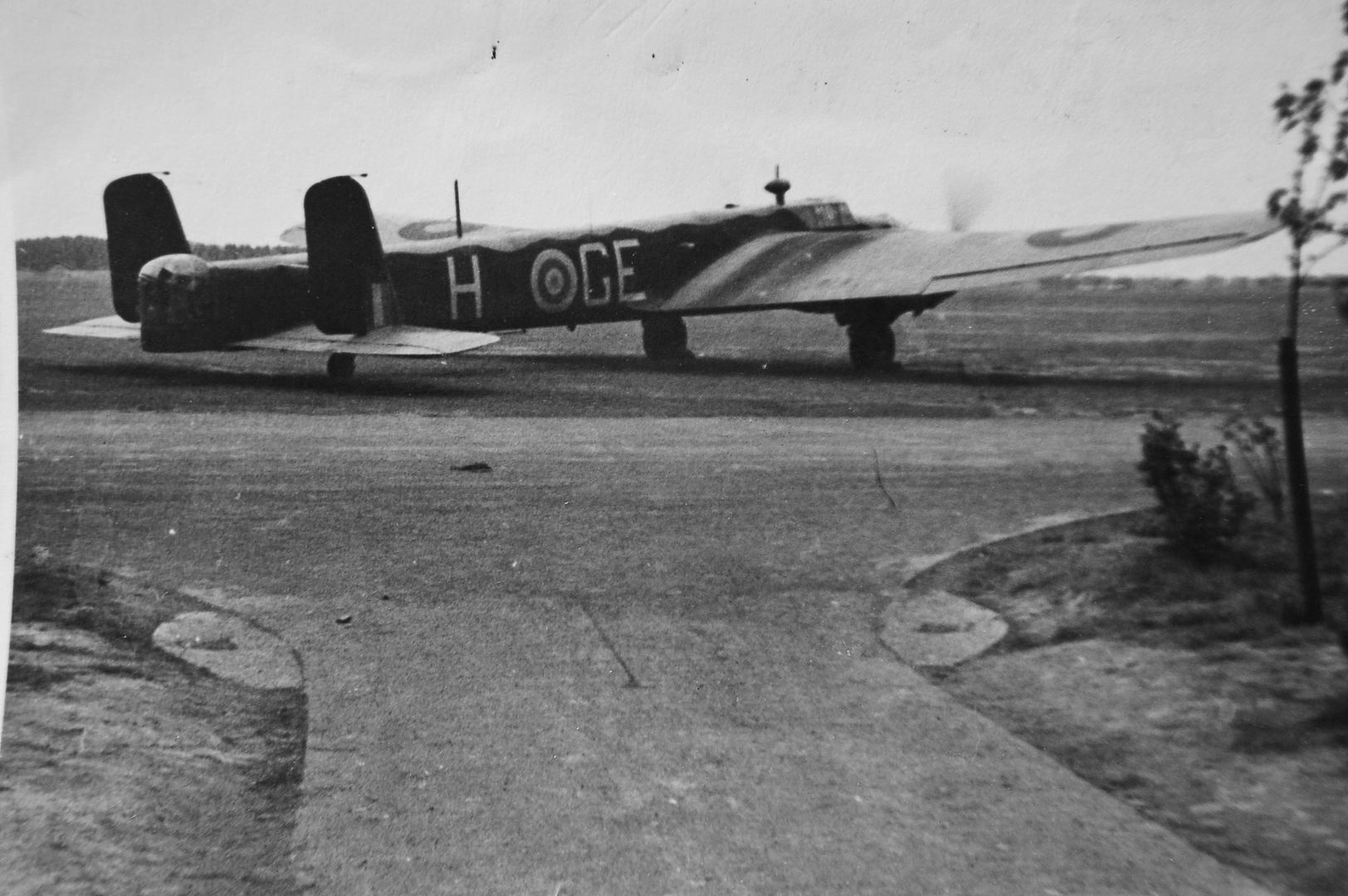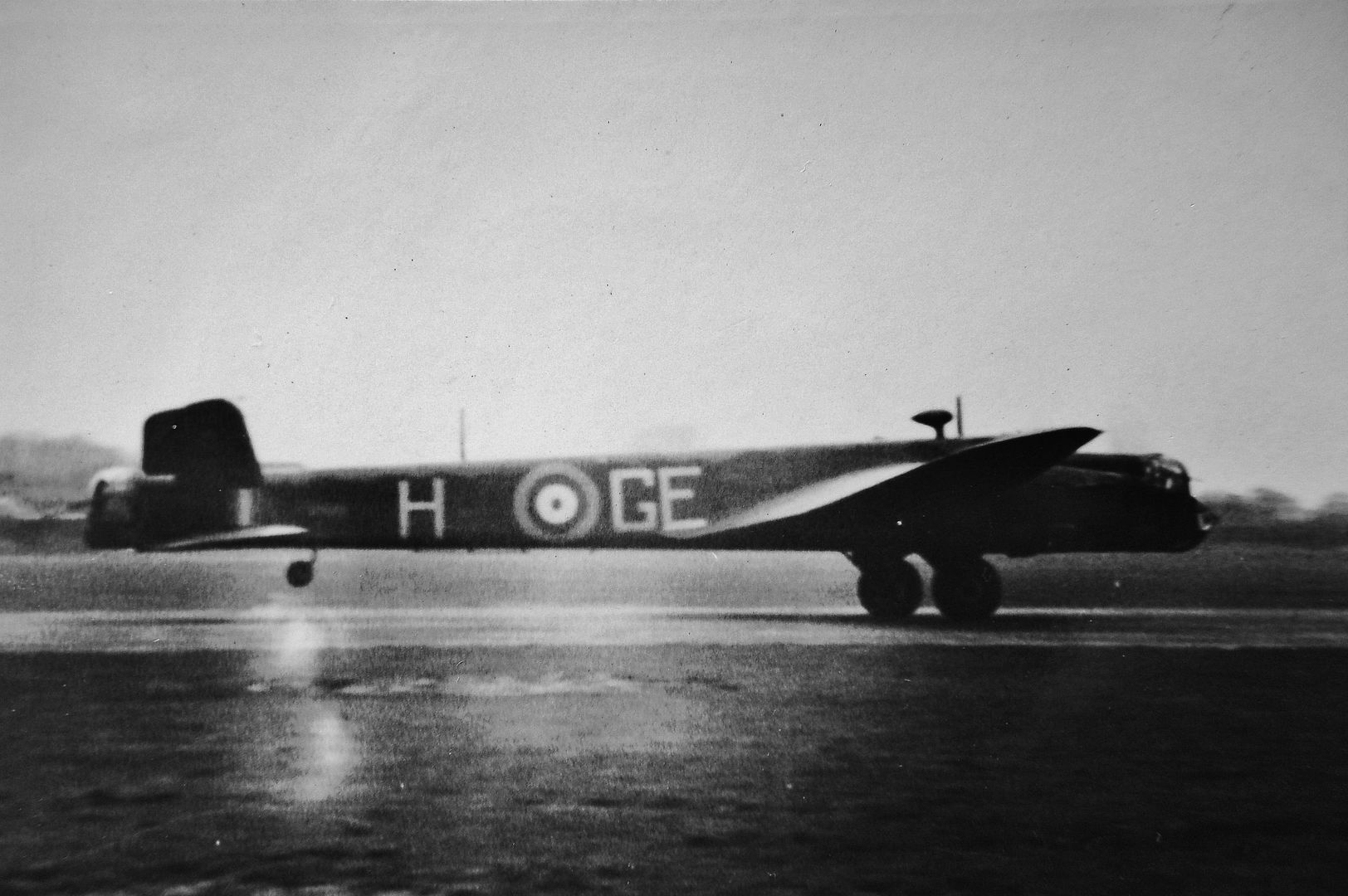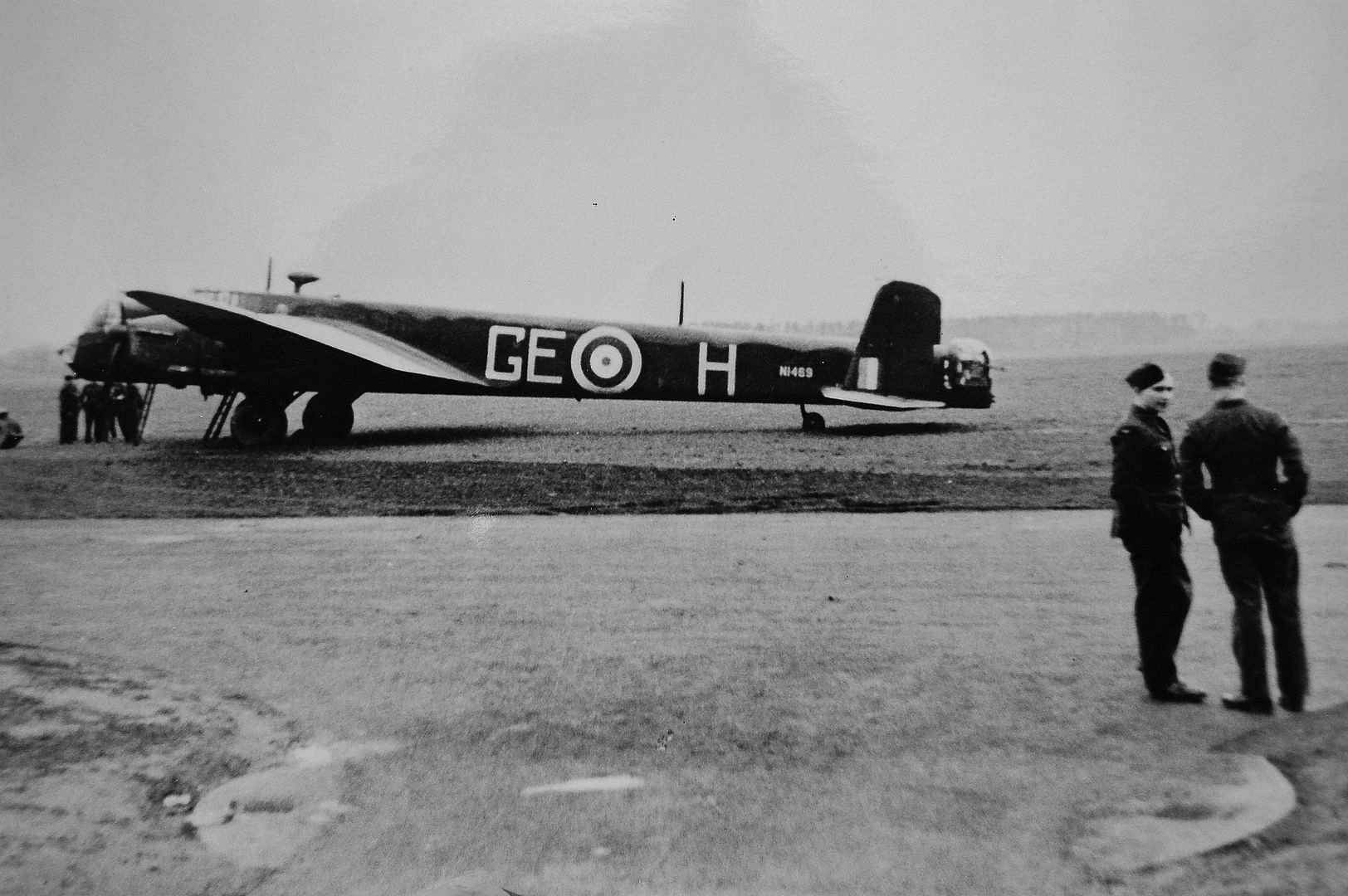|
|
Post by Dave Homewood on Jun 29, 2021 22:56:59 GMT 12
COLLISION OF BOMBERS
NEW ZEALANDER SAVES PLANE
(United Press Assn.—Elec. Tel. Copyright) LONDON, April 22
A Stirling bomber of the New Zealand 75th Squadron collided with a Lancaster while returning from the raid on Rostock. The Stirling was piloted by a New Zealander, Sergeant Jim Dallzell. For three and a-half hours he flew the bomber back to its base, although it was impossible to steer except by the use of the engines. It also had a pronounced list to port.
“It was a remarkable feat,” said the navigator, Flying-Officer R. R. Rayner, of Dannevirke. “Jim landed the plane safely and nobody was hurt. We had an uneventful trip to Rostock. We bombed fairly early in the raid and saw one of our aircraft being shot up—we saw three going down altogether during the trip.
“On the return flight we saw the raid progressing over Stettin. We could see lots of aircraft in the moonlight. We were flying low near the German coast when the rear-gunner and wireless operator reported that there was a Lancaster on our port.
“Jim turned abruptly, but suddenly there was a terrific bump and the Lancaster collided with us. It did not crash and Jim righted the Stirling, but the tail of the plane was bent over and useless, and there was a heavy list to port. Jim had to hold the controls hard over to the starboard, steering by the engines, and he hung on for three and a-half hours while we were crossing the North Sea at a low level.
“Our wireless had been put out of action and if we crashed, which often seemed likely, we would not be able to send out an S.O.S. They were long hours, but we arrived bang on our destination. Jim landed beautifully, but, because he could not control the rudder, she spun round. However, no harm was done. It certainly was a marvellous bit of flying.”
WAIKATO TIMES, 24 APRIL 1943
|
|
|
|
Post by aircraftclocks on Apr 28, 2022 2:02:59 GMT 12
Found this document in an archive at the lincoln University, UK.
BATTLE ORDER - NO. 75 (NZ) SQUADRON - 6/7th DECEMBER, 1944.
A/C Captain Navigator Bomb Aimer WO/Air F/Engineer MU/Gnr. R/Gnr.
E * F/O Glossop Sgt McNeil F/S Mace P/O Meehan Sgt Harvey Sgt Killick Sgt Haworth
A F/L Barton F/O Birch F/S Semple F/O Stuart Sgt Smith Sgt Moore Sgt Williams
B F/O Abraham F/O Glengarry F/O Jones Sgt Davies Sgt Hughes Sgt Makin Sgt Evans
D F/O Leadley Sgt Day F/S Gill F/L Galloway Sgt Clare F/S Baker Sgt Heslop
Y F/O Ford F/O Weeden F/O Chapman F/S Tredinnick Sgt Muller Sgt Glover Sgt Fitzwater
X F/O Gawith F/ Baker P/O Taylor F/O Piesse Sgt Jones Sgt Caldwell
S F/O Kilpatrick F/O Tait F/S Cattenack Sgt Davenport Sgt Barton Sgt Halladay Sgt Olive
R F/O Atkin F/S Coulson F/S Thurston F/S Curtis Sgt Jones Sgt Madden Sgt Johnstone
X JN** F/L Waugh P/O Woonton P/O Swetland F/S Kidd Sgt Southgate F/S Nickels F/S McDonald
O JN F/S Jones Sgt Jacob F/S Petrie F/S Humphrey Sgt Hall Sgt Talbot Sgt McManus
F JN@ F/O Williams F/S Sim W/O Duncan W/O Harrison Sgt Pound F/S Harrington F/S Smith
K JN F/O Simpson P/O Woodhouse F/S Hemingway Sgt Dibbs Sgt Johnstone F/S Thomas Sgt Chippendale
* 2nd Pilot P/O Parsons.
@ 2nd Pilot F/O Clements.
** 2nd Pilot F/S Wood
Reserve aircraft A "N" & JN "P"
Times: 1st Briefing 1400 2nd Briefing 1500 Bus to Aircraft 1600
DUTY PERSONNEL
Officer i/c Flying: W/C Lealie, D.S.O., A.F.C. Engineer officer:- W/O Murphy Sigs Officer:- F/O Jenkins
Radar:- F/S James, Sgt Holdsworth Electrical Officer:- F/S Melhuish Armourers:- Sgt Conner, Cpl Moon, AC Springham
Stores:- LAC Helmore Compass Adjstr:- Sgt Dalby Photo:- LAC Sanders L/Reprs.:- Cpl Pritchard, AC Thornton
W/Mech.:- Cpl Robinson, LAC Wooly A.C.P.:- Electricians:- Cpl Peel, AC Griffiths
|
|
|
|
Post by fwx on May 10, 2022 9:57:44 GMT 12
Thanks aircraftclocks, this was the Merseburg operation, at that time one of the longest trips into Germany for Bomber Command, to one of the most heavily-defended targets. It was the first op for my uncle's skipper, Johnny Wood (** above), who flew as Second Pilot with the Waugh crew: www.jn-dogboys.com/operations/johnnys-2nd-dickey/ |
|
|
|
Post by skippynz on Aug 25, 2022 15:45:17 GMT 12
Fantastic thread - thank you. Do we happen to know any serials of Popeye Lucas's Whitleys (or, for that matter, any other Kiwi Whitley Pilots). Might be vaguely related to a model on my bench in need of an identity
|
|
|
|
Post by Dave Homewood on Aug 25, 2022 16:01:39 GMT 12
I will look out Popeye's Whitley serials for you. Stand by.
|
|
|
|
Post by Dave Homewood on Aug 25, 2022 16:29:12 GMT 12
OK, these are the Whitleys that Popeye flew as second pilot in (usually with Aubrey Breckon as his captain), in the order they appear first time in his logbook...
K7186
K7184
K7185
K7187
K7189
K7188
K7222
K7191
K7194
K7181
K7195
K7211
K7190
K7213
K7193
K9019
K7210
K9018
K7192
K9026
K9037
K9022
K9024
K9029
|
|
|
|
Post by skippynz on Sept 9, 2022 14:43:49 GMT 12
Wow, that's awesome - thanks, Dave!
|
|
|
|
Post by Antonio on Sept 9, 2022 21:10:46 GMT 12
Re the Whitley, there is always N1377 DY-P from 102 Sqn that was flown by Fg Off Ken Gray (twin brother of Colin):  www.flickr.com/photos/ww2images/6898276103 www.flickr.com/photos/ww2images/6898276103 commons.wikimedia.org/wiki/File:Royal_Air_Force_Bomber_Command commons.wikimedia.org/wiki/File:Royal_Air_Force_Bomber_Command,_1939-1941._C48.jpg From: nzetc.victoria.ac.nz/tm/scholarly/tei-WH2-1RAF-c2.html#n31"The kind of thing that could happen on these missions is well illustrated by the experiences of Pilot Officers Gray1 and Long2 one night in November 1939. Gray was the captain and Long the navigator of a Whitley detailed to drop leaflets over Cuxhaven and then reconnoitre for warships in that area and in the vicinity of Heligoland. The first part of the flight was uneventful, but just after the leaflets had been dropped the aircraft ran into a snowstorm and, as a result of ice formation, became extremely hard to control. Then, a few moments later, it was struck by lightning which tore away large portions of the fabric on both wings. Gray nevertheless determined to complete his task and turned his damaged machine towards Heligoland. But soon he found great difficulty both in climbing and maintaining airspeed, owing to the damage and the increasing weight of ice. Finally the Whitley began to lose height rapidly and it was not until it had fallen several thousand feet that Gray managed to regain some sort of control. Now quite certain that a landing in the sea was inevitable, he ordered his wireless operator to send an SOS and his navigator to prepare the dinghy for launching. However, after a further struggle with the controls, he found he could just manage to hold the aircraft in the air so requested a course to steer for home. During the long return flight across the North Sea, which had of necessity to be carried out at a low altitude, heavy rainstorms were met and the aircraft was only just controllable—any easing of the pressure required to maintain it on an even keel at once resulted in a downward plunge. But Gray, of small build and not particularly robust, displayed exceptional skill in handling his aircraft; eventually the English coast was reached and the Whitley landed at an airfield in East Anglia. 1 Flying Officer K. N. Gray, DFC, Czechoslovakian War Cross; born Christchurch, 9 Nov 1914; joined RAF 1937; killed in aircraft accident, 1 May 1940. 2 Flying Officer F. H. Long, DFC; born Masterton, 16 Jul 1916; joined RAF May 1939; killed on air operations, 13 Mar 1941. Both Gray & Long were awarded immediate DFC's as a result of this Op. |
|
|
|
Post by skippynz on Sept 9, 2022 22:40:33 GMT 12
Antonio, thank you, I like that even more. The kit comes with markings for N1380 DY-R so I'm half-way there! I do recall reading about this, was it in Colin Gray's book?
Sorry for the thread-drift and thank you for the help.
|
|
|
|
Post by Antonio on Sept 10, 2022 11:54:00 GMT 12
Antonio, thank you, I like that even more. The kit comes with markings for N1380 DY-R so I'm half-way there! I do recall reading about this, was it in Colin Gray's book? Sorry for the thread-drift and thank you for the help. Yes I believe it was mentioned in that book. I'm sure I first came across the photos in Bomber Squadron of the RAF and of course the reference in the Official History (quoted above) |
|
|
|
Post by davidd on Sept 10, 2022 13:33:55 GMT 12
Wow, was not even aware that Whitleys had so much fabric covering on their mainplanes, just presumed it was metal like all the other RAF monoplane bombers of that era (if you forget about the Anson!) I am continually being re-educated (which is as good thing).
|
|
|
|
Post by Dave Homewood on Sept 10, 2022 13:49:06 GMT 12
We're all always learning David, that is what I love about this forum.
|
|
|
|
Post by pjw4118 on Nov 12, 2022 15:12:58 GMT 12
Theres also Bill Mackley DFC* ( NZ39926). He flew with 58 squadron ( Linton on Ouse ) on Whitleys from Sept 1940 till June 1941 flying Whitley N1469 GE-H. Bill was awarded a DFC at the end of his tour which had included solo raids to Berlin .
Bill returned to NZ and was posted to 2 GR Squadron in Nelson. Later he was trained on flying boats and moved to 6 squadron on Guadacanal . In Jan 1944 he flew a Catalina ( NZ4013) to rescue a 10 man B24 crew who had ditched near Java . With 17 now aboard and in rough seas , Bill managed to take off and eventually land at Havalo Bay . Bill received a bar to his DFC for this rescue mission .
Post war Bill joined NAC becoming a senior captain and the NZ representative in the Air Navigators Guild.
|
|
|
|
Post by skippynz on Aug 11, 2023 14:25:32 GMT 12
Theres also Bill Mackley DFC* ( NZ39926). He flew with 58 squadron ( Linton on Ouse ) on Whitleys from Sept 1940 till June 1941 flying Whitley N1469 GE-H. Bill was awarded a DFC at the end of his tour which had included solo raids to Berlin . Bill returned to NZ and was posted to 2 GR Squadron in Nelson. Later he was trained on flying boats and moved to 6 squadron on Guadacanal . In Jan 1944 he flew a Catalina ( NZ4013) to rescue a 10 man B24 crew who had ditched near Java . With 17 now aboard and in rough seas , Bill managed to take off and eventually land at Havalo Bay . Bill received a bar to his DFC for this rescue mission . Post war Bill joined NAC becoming a senior captain and the NZ representative in the Air Navigators Guild. That might be a better option, since I can find a photo of it here: www.worldwarphotos.info/gallery/uk/raf/whitley/whitley-v-p5028-ger-n1469-geh-58-squadron/Thank you! But not 75 Squadron, thread drift, my bad... |
|
|
|
Post by pjw4118 on Aug 16, 2023 14:43:38 GMT 12
|
|
|
|
Post by skippynz on Aug 18, 2023 19:06:36 GMT 12
Wow, that is perfect, thank you! Wish there was a 1:48 Injection moulded Whitley to do this justice!
Thank you heaps!
|
|
|
|
Post by Calum on Aug 21, 2023 14:56:54 GMT 12
Great info in here for us modelling nerds. Any Coastal Command Whitley Kiwi Conenc6tions that people know off (Yeah it's for a modelling project)
|
|
|
|
Post by Dave Homewood on Aug 21, 2023 16:39:32 GMT 12
|
|
|
|
Post by Dave Homewood on Apr 18, 2024 22:03:07 GMT 12
Fall From Bomber Recalled
“The Press” Special Service
HASTINGS, January 29.
The death has occurred of a man who belonged to the world’s most exclusive "club” — for those who have fallen from an aircraft without a parachute and have lived to tell the tale. He was Mr H. English, of Hastings formerly a member of No. 75 Squadron.
In December, 1940, Sergeant English was the navigator of a Wellington bomber returning from a raid on the Ruhr when the aircraft was badly shot up.
Pilot Officer C. F. Scott of Timaru, was peering through the rain-swept darkness looking for a place to put his aircraft down. Steadily losing height, the aircraft flew back across the border of Germany and into occupied France. The captain warned his crew: "Prepare to bail out”
The Wellington staggered across a mountainous ridge, "mushed” into trees on the summit, and flew on.
Sergeant English told later of feeling a terrific shock, and an agonising pain in his legs. Then he was turning over in the blackness of the night.
Although conscious of the receding drone of the aircraft's engines, Sergeant English did not remember landing in a haystack, but that is where he fell.
He recalled hearing German voices, hands lifting him on to a stretcher, the white walls of a military hospital and the voices of French nurses.
The Germans treated Sergeant English with great respect. This was the man, they said, who had fallen from an aircraft without a parachute.
Subsequent computations showed that he had fallen 1500 feet—and by a million-to-one chance had landed in a haystack in the valley below.
Pilot Officer Scott brought the Wellington in for a crash landing: All the crew survived. Pilot Officer Scott made off into the rain-sodden French countryside and the following day was found by the French underground. He made an incredible escape through Spain to fly again.
Mr English spent weeks in a German military hospital before entering a prison camp.
Shot Through Astrodome
Later he was able to reconstruct the events which had smashed his thigh and inflicted injuries which were to plague him for the rest of his life. The upward jerk of the bomber when it hit the trees on the mountain-top had shot him right through the navigator’s astrodome.
Still suffering from his injuries, he was repatriated to England in 1943. After two years in hospital in Wellington he returned to his native Hawke’s Bay, married, and had two children.
He dealt in wool for two years until an illness put him back in hospital. On discharge he was taken on the staff of Memorial Hospital, Hastings, where he worked intermittently until his death in the Palmerston North Hospital.
PRESS, 30 JANUARY 1963
|
|
|
|
Post by 30sqnatc on Oct 16, 2024 18:23:42 GMT 12
|
|











